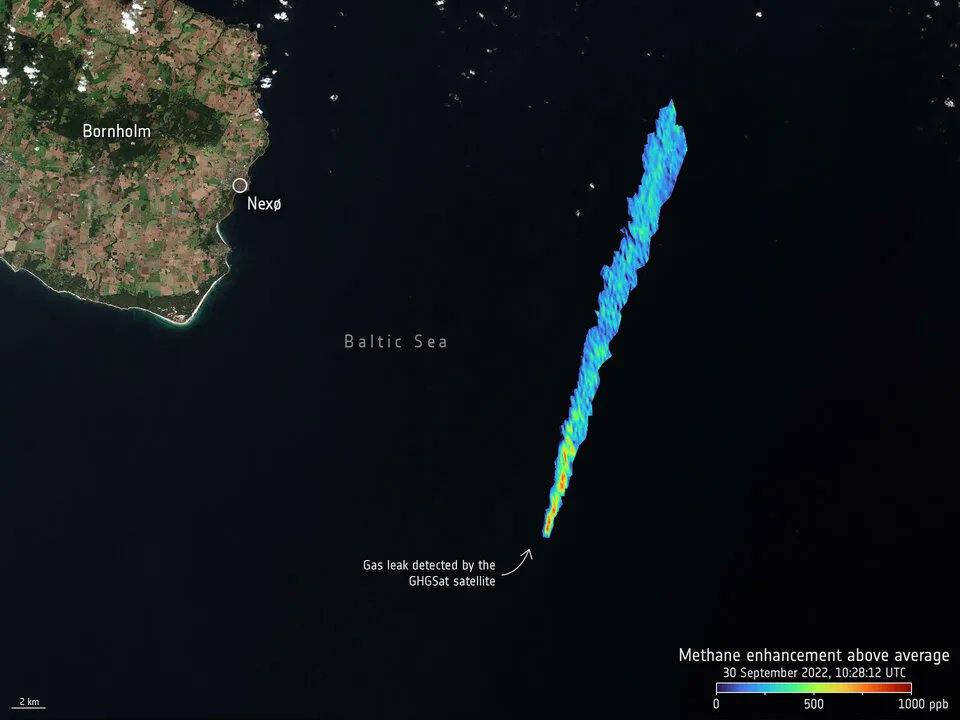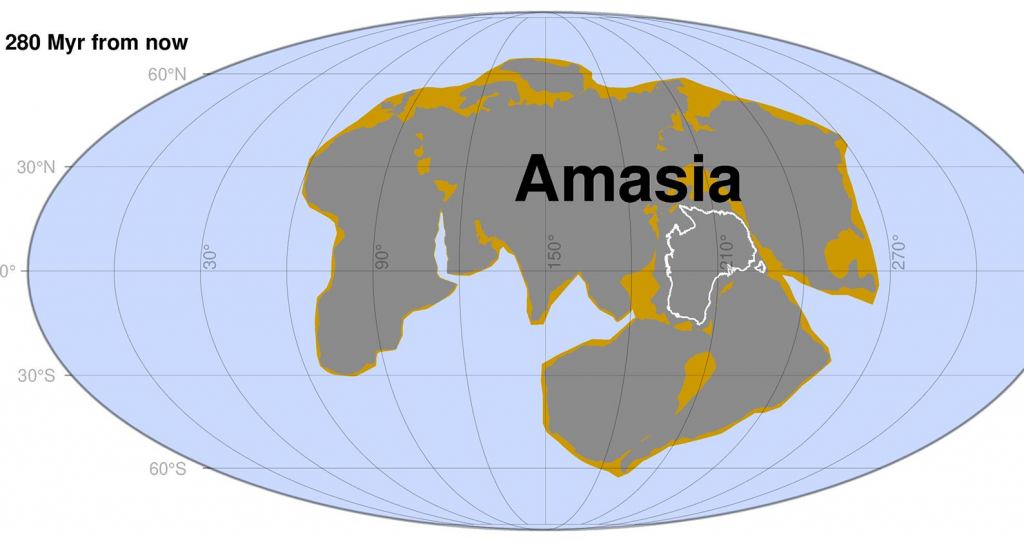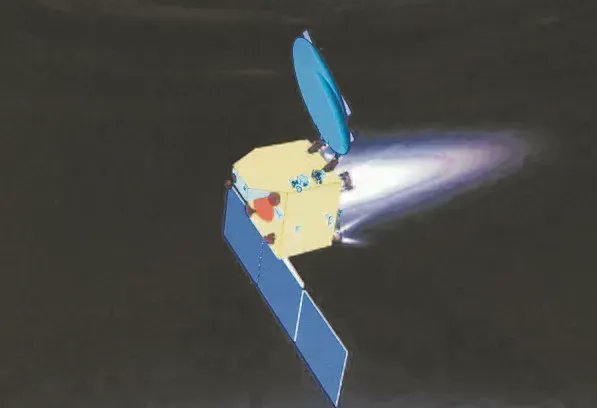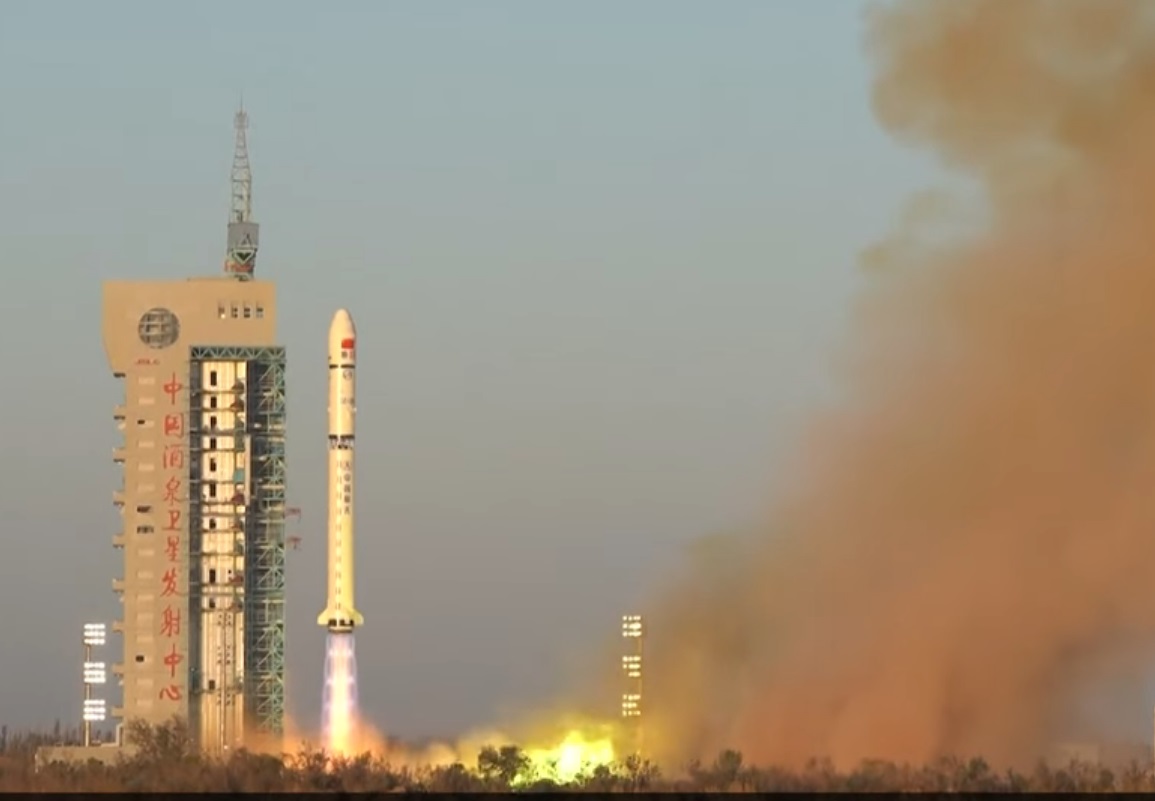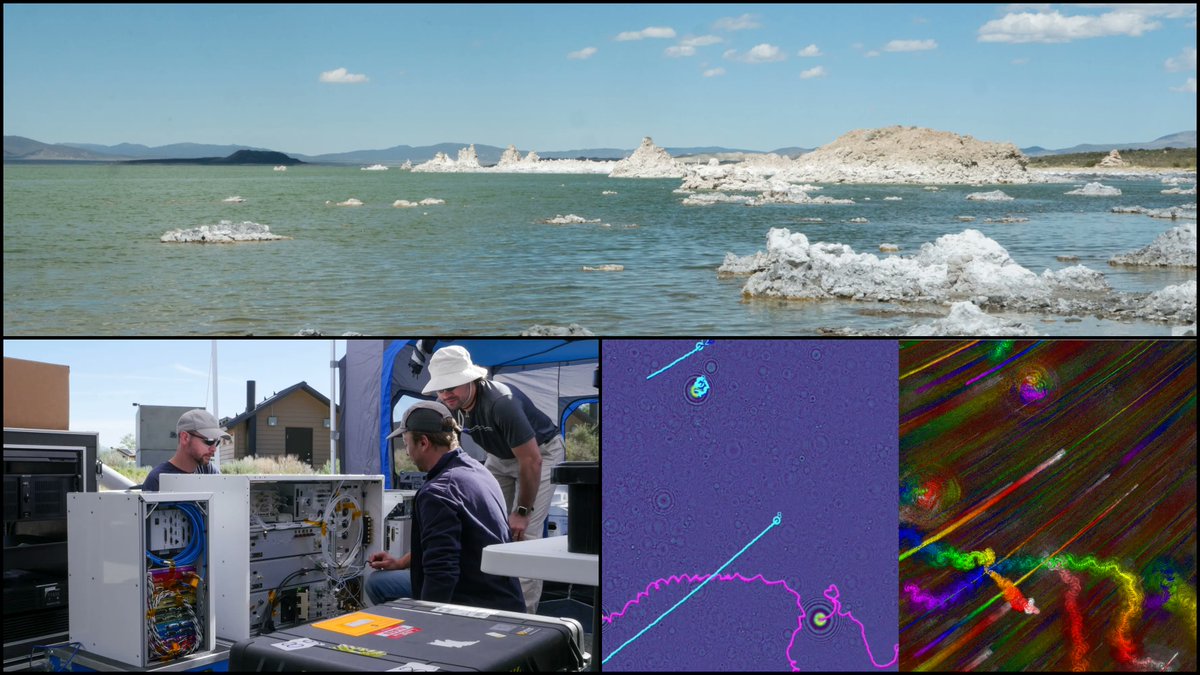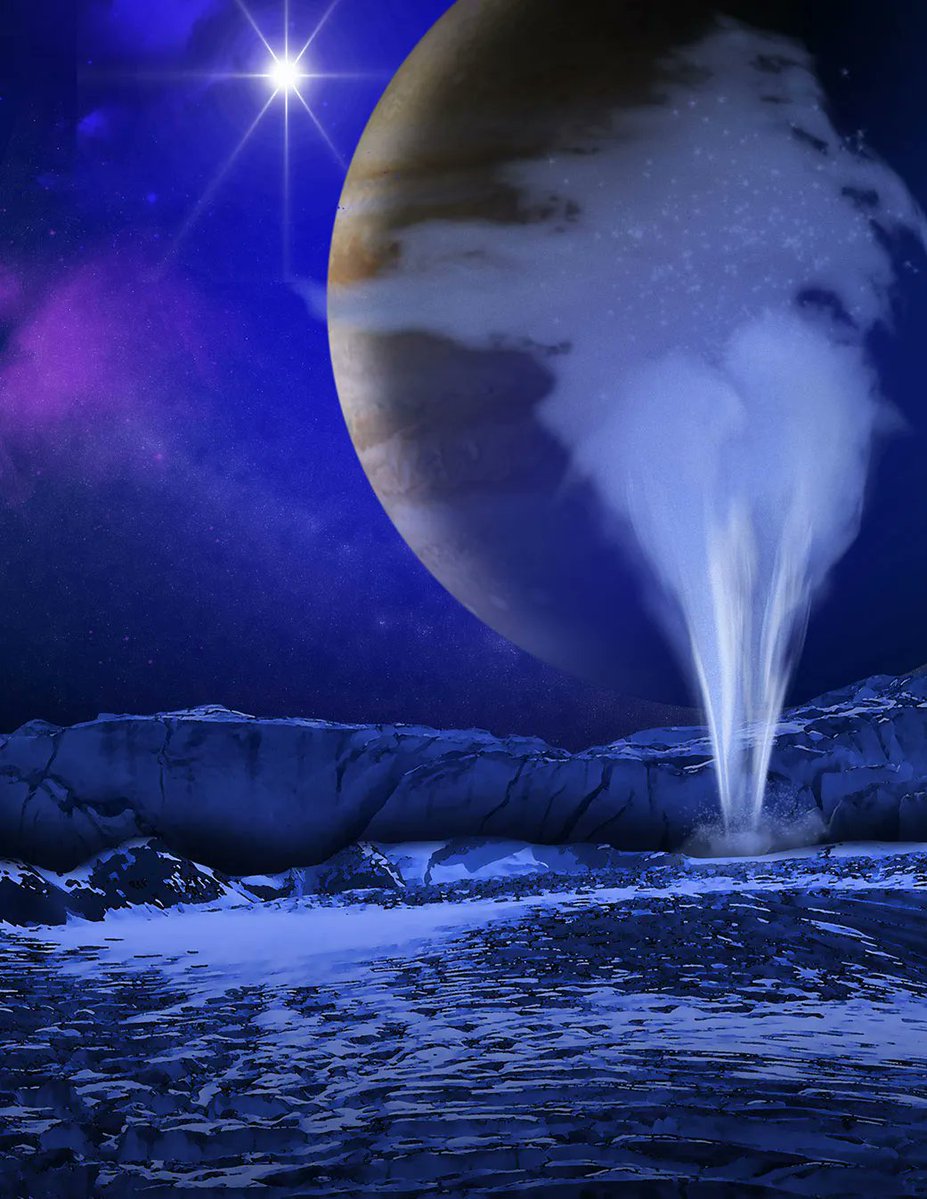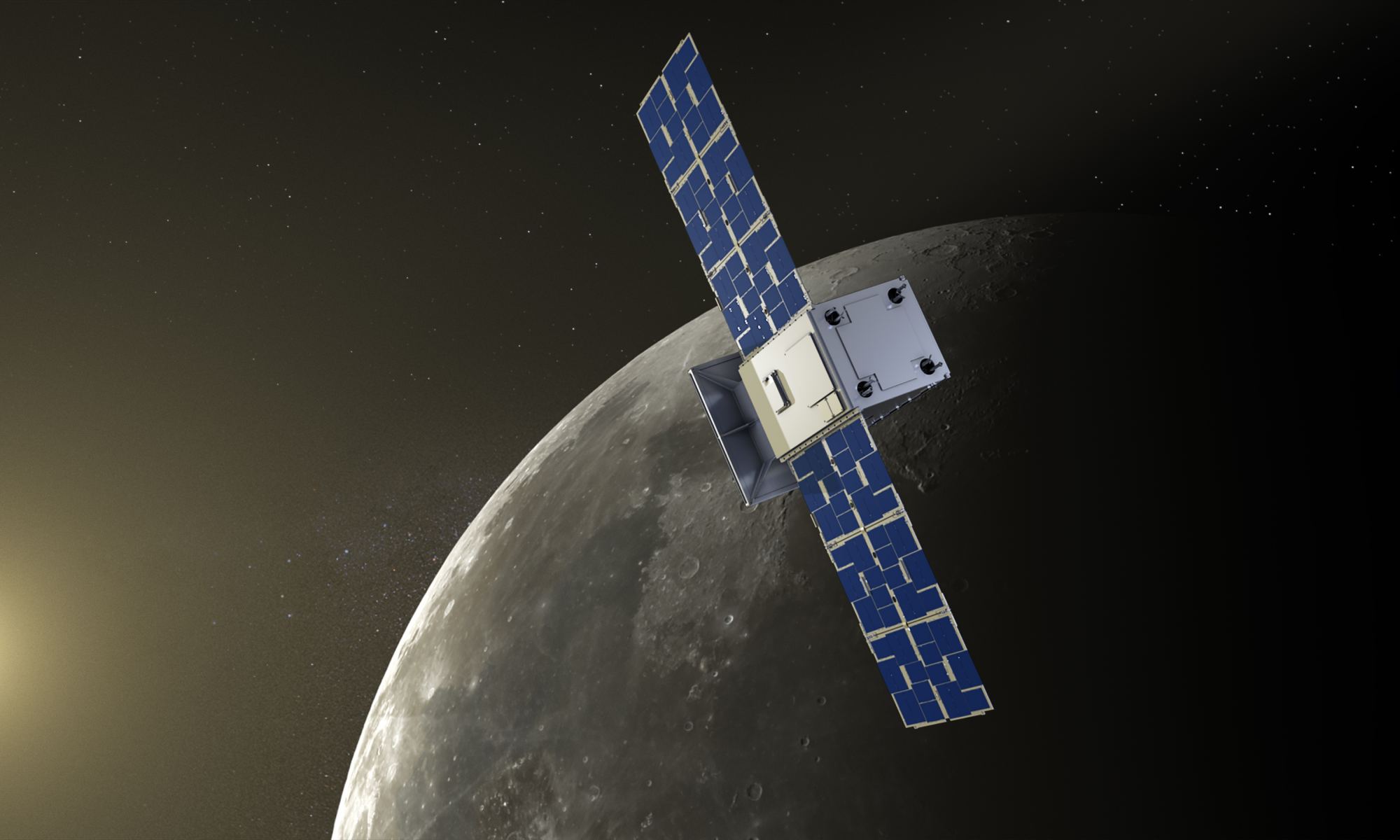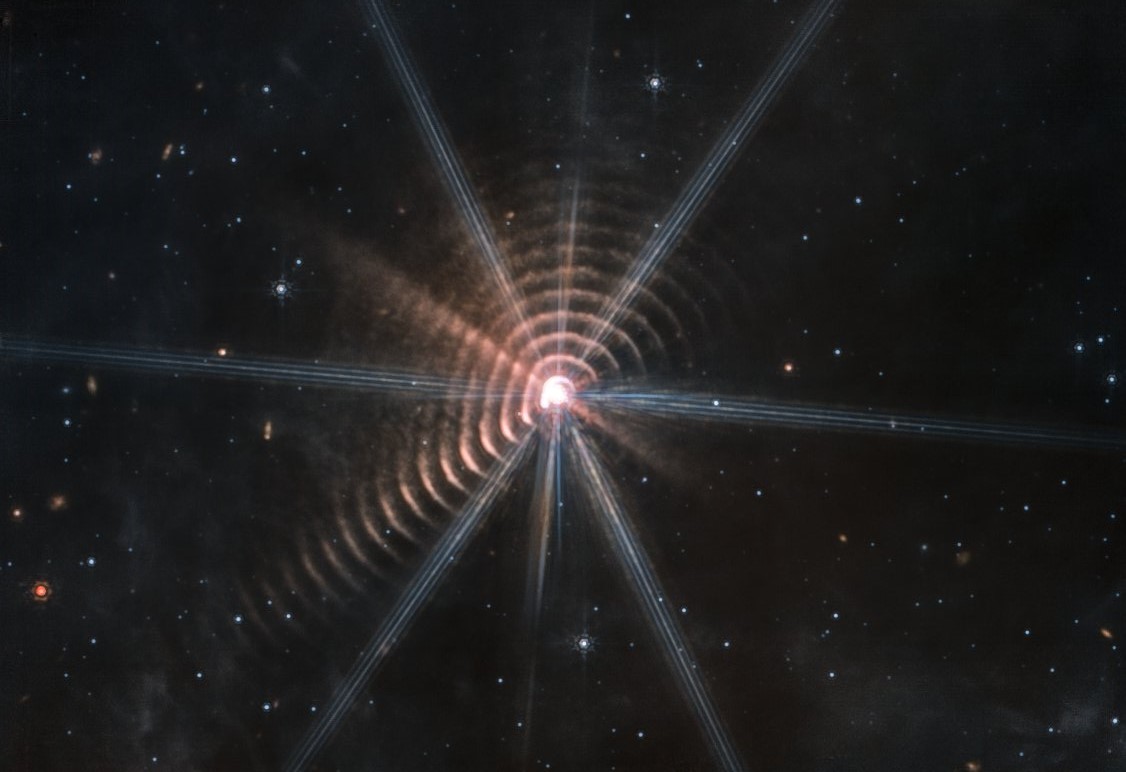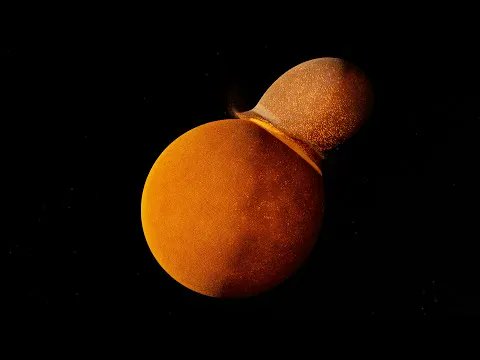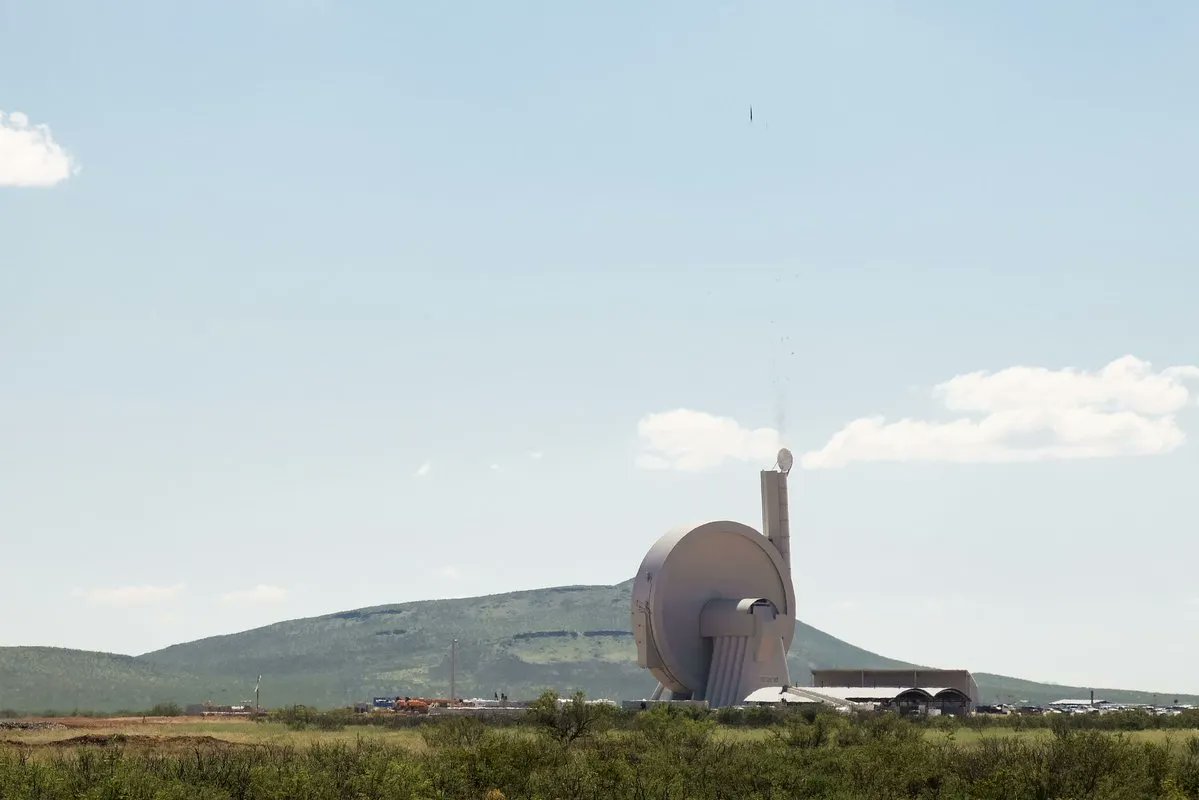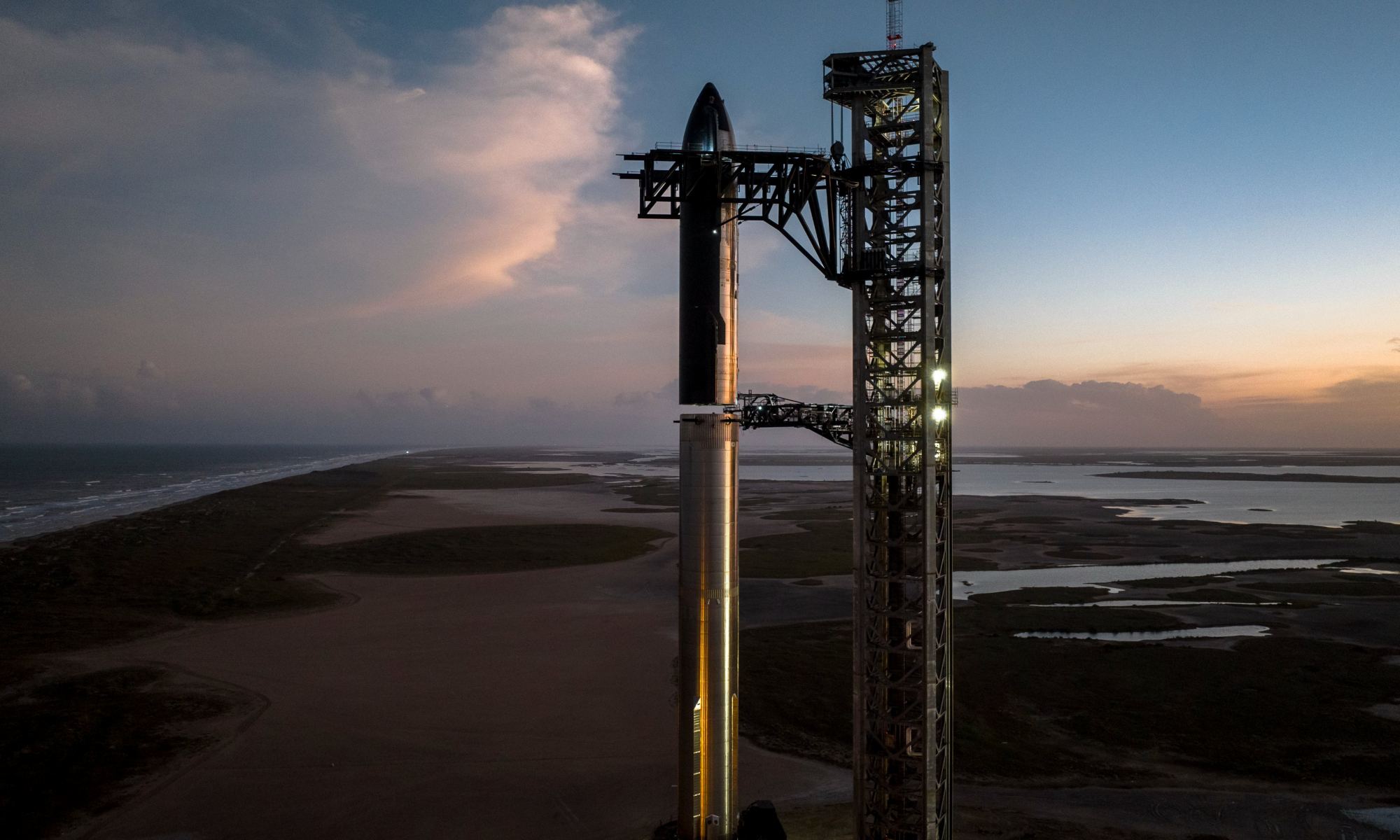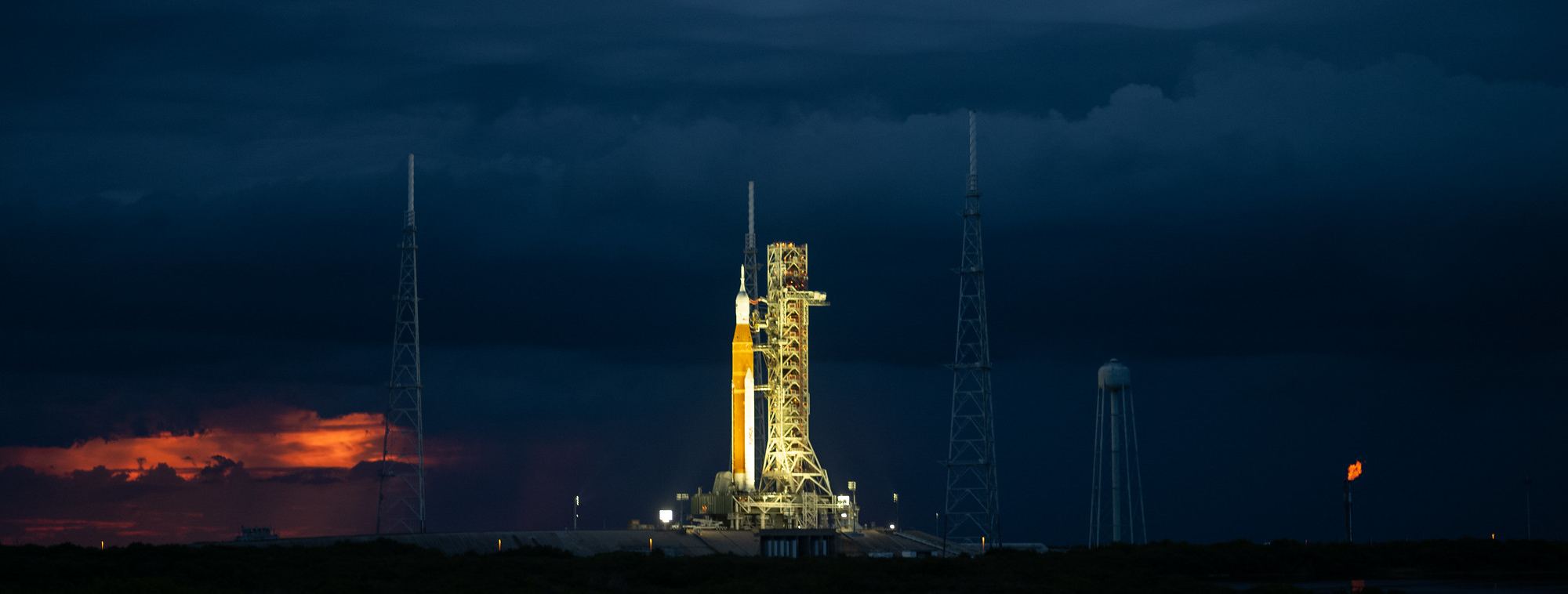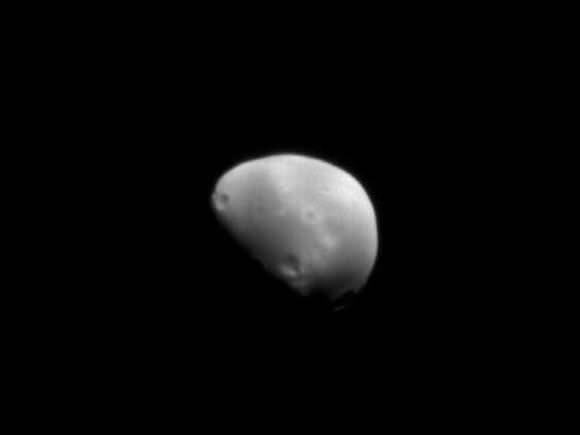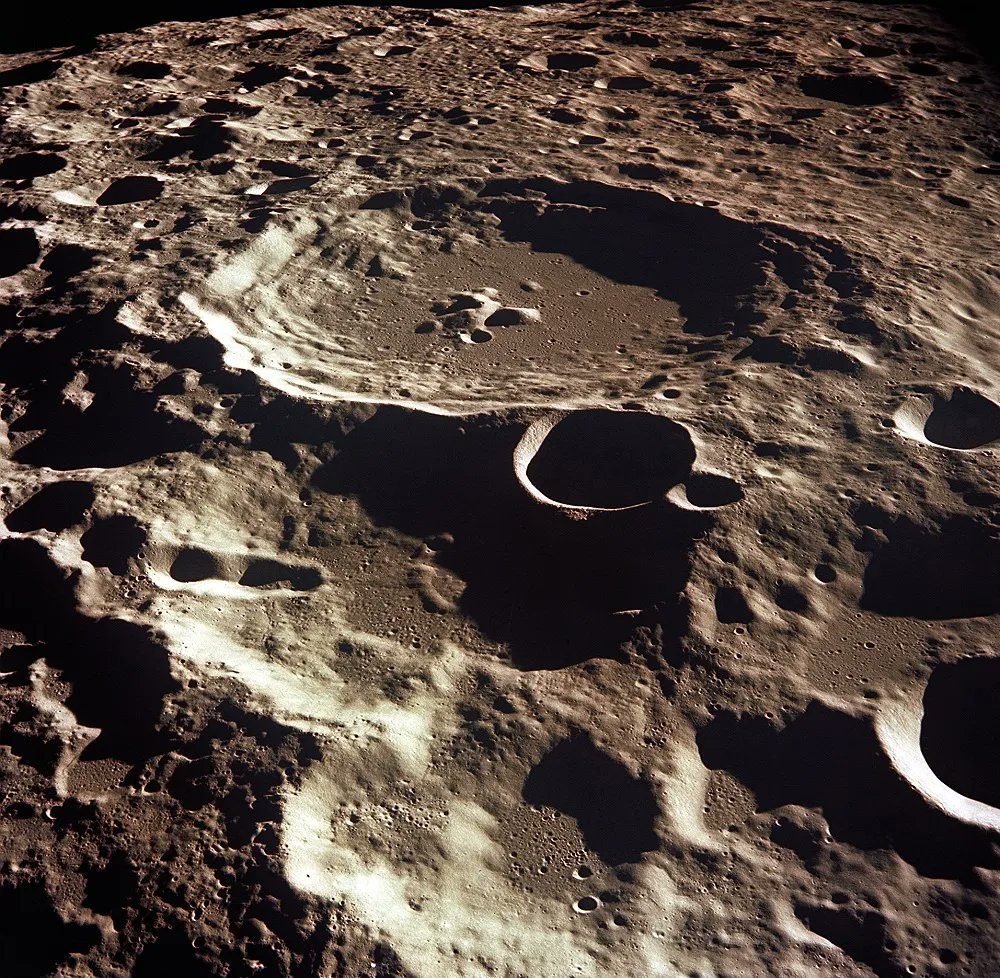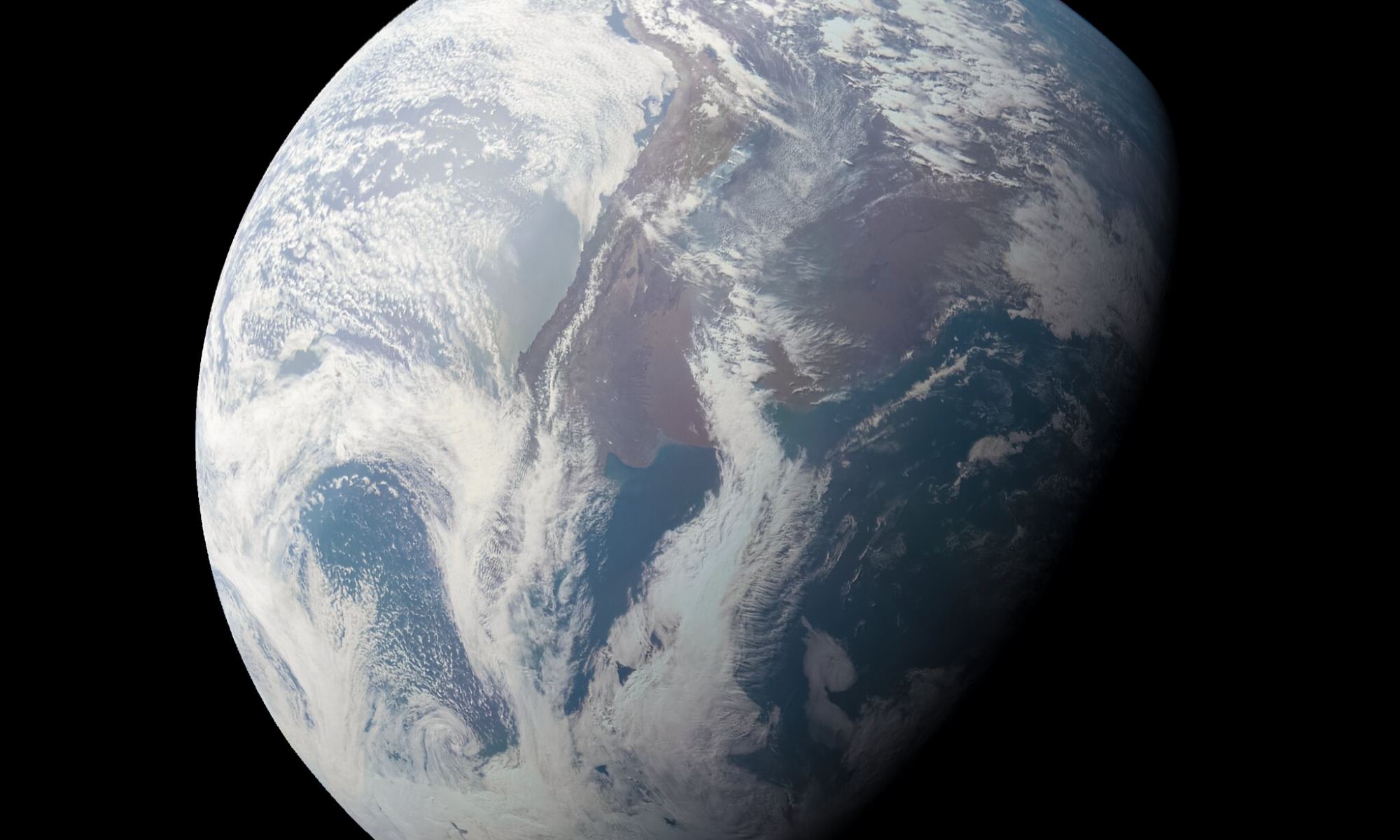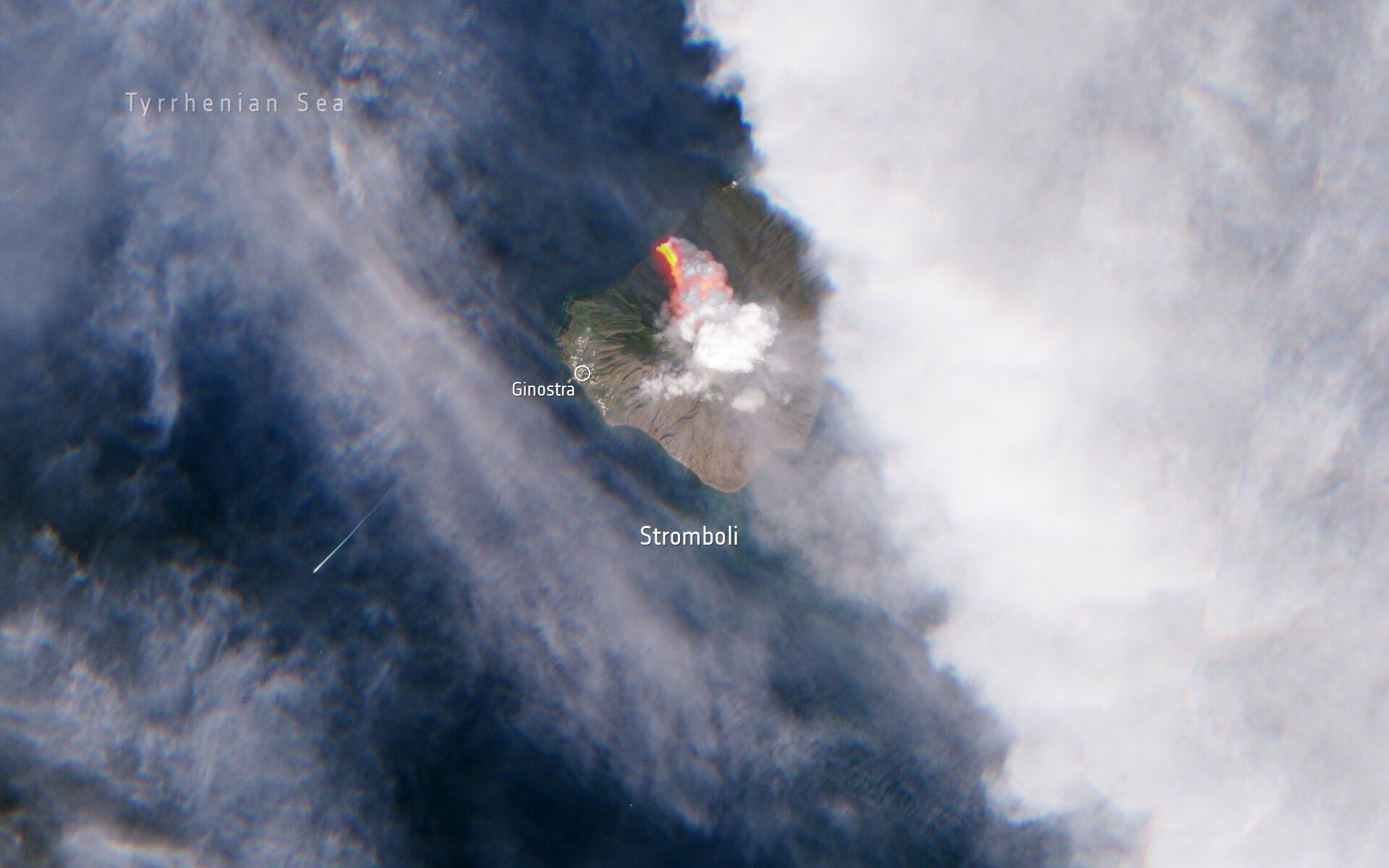Success! DART Impact Shortened Asteroid’s Orbit Time by 32 Minutes
When NASA directed its DART mission to slam into Asteroid Dimorphos, it hoped to shorten its orbital period around Asteroid Didymos. Seventy-three seconds was the bare minimum; 10 minutes would have been excellent. But when they ran the numbers, it looked like DART shortened the asteroid's orbital time by 32 minutes. Before the impact, Dimorphos took 11 hours and 55 minutes to orbit; now, it's 11 hours and 23 minutes. This provides a baseline that astronomers can use to calculate how difficult it'll be to prevent a dangerous asteroid from hitting Earth.
Read the full story by Alan Boyle
🦄 If you enjoy what we do at Universe Today, join our Patreon Club! Here are just some of the perks you can get by subscribing:
- I’ll remove all ads on UniverseToday.com for life, even if you unsubscribe in future
- You’ll get ad-free versions of our videos, so you won’t even have YouTube ads
- Early access to interviews, which we now do in improved quality
- A secret Patreon Email Newsletter
- Access to Patreon-only AMA session once per month
- Behind the scenes and other bonus content
- Help us stay independent and support the team directly
Support Universe Today. Join the Club Now!
JWST Worth the Hype? How to Build a Wormhole? How to Pass Van Allen Belts? | Q&A 195
Are there alternatives to CMB? Will we ever build a space elevator? How can we see radiation coming from a black hole when nothing can escape it? Can you heat something with gravitational waves? Why JWST can look lame to the laymen? All this and more in this week's Q&A with Fraser Cain.
🎧 Subscribe to our podcasts:
- Universe Today Podcast. Space news, interviews, Q&As, and exclusive content from Universe Today.
- Astronomy Cast. Your weekly facts-based journey through the cosmos, which I co-host with astronomer Dr. Pamela Gay.
- Weekly Space Hangout. A weekly round-up of all the breaking space news. Rocket launches, new discoveries from Hubble, and planetary science by a round table of scientists and space journalists.
Upcoming Shows:


The Methane Released From the Damaged Nord Stream Pipeline is Visible From Space
In late September, officials discovered leaks from the Nord Stream 1 and 2 gas pipelines. While workers are still trying to figure out the cause of the leaks, they're almost certainly sabotage, a casualty of Russia's invasion of Ukraine. Neither was carrying natural gas at the time, but they were taking methane, which is now bubbling up out of the ocean. The trail of bubbling water is so vast that satellites can chart it from space, measuring how much methane is being released.
Read the full story by Nancy Atkinson
The Dark Energy Camera has Captured a Million Images, an Eighth of the Entire sky. Here are Some of its Best Pictures so far
The Dark Energy Survey has been hard at work cataloging the night sky and taking millions of images. In six years of nightly observations, it's completed one-eighth of the sky, photographing 2.5 billion astronomical objects, such as galaxy clusters, stars, comets, asteroids, dwarf planets, and supernovae. Recently, the Dark Energy Survey released fifteen of their favorite images taken so far, including nebulae, star clusters, and even a comet.
Read the full story by Matt Williams
Huge Success With DART // JWST Sees Weird Rings // Moon's True Origin
DART’s results are in; it hammered Dimorphos, the Moon might just be a big chunk of the Earth, Webb sees bizarre rings around a star, and SLS gets a new launch date… at night.
Check out This Amazing Fly-Through of a Futuristic Space Habitat
One day, humanity may live in huge rotating orbital colonies. One design, called a Stanford Torus, could provide Earth-like gravity and climate for as many as 140,000 people. Dr. Mark Garlick used 3D animation software to imagine what it might look like to live in one of these space stations, providing a virtual flythrough. It took Mark 9-10 weeks to model and then 48 hours to render the entire animation. It's an incredible animation; check it out.
Read the full story by Nancy Atkinson
The Future of Telescopes. Coronagraphs With Dr. Lucie Leboulleux
Coronographs will soon be in every major telescope. They can block the light from the star and reveal things around it, like exoplanets. There's so much amazing science behind them. Like, did you know coronographs can be adaptive? We dive into all that with Dr Lucie Leboulleux. Enjoy the interview!
Thanks to Hayabusa 2’s Samples, Scientists can Track the History of Ryugu Earlier in the History of the Solar System
When Hayabusa2 returned samples of asteroid Ryugu, it was an opportunity for scientists to study an asteroid in the world's most advanced laboratories. In one experiment, scientists discovered that Ryugu is derived from an earlier, larger asteroid that broke away millions of years ago. But it also contained tiny grains that came from even earlier, at the very beginning of the history of the Solar System.
Read the full story by Andy Tomaswick
The Pacific Ocean Will be Gone in 300 Million Years as the World's Continents Drift and Combine
The Earth's continents are spaced evenly across the planet, with giant oceans separating them. But they're on the move, drifting a few centimeters a year thanks to plate tectonics. Hundreds of millions of years ago, they formed supercontinents like Gondwana and Pangaea. Geologists have predicted that another supercontinent will appear about 300 million years ago, called "Amasia." The Americas will drift westward, merging into Asia and eliminating the Pacific Ocean.
Read the full story by Matt Williams
India’s Mars Orbiter Mission is Finally out of Fuel After 8 Years of Science Operations
India launched its Mars Orbiter Mission (or MOM) in 2013 and went into orbit on the Red Planet in 2014. Over the next eight years, the hardworking spacecraft would send home science data about Mars. The mission was technically a technology demonstrator, carrying five scientific experiments onboard. Over its time at Mars, MOM helped to puzzle out the nature of the source of methane in the Mars atmosphere. After eight years at Mars, it finally ran out of propellant, ending the successful and scientifically productive mission.
Read the full story by Andy Tomaswick
China Launches First Solar Observatory ASO-S
An armada of space telescopes is observing the Sun, joined by even more instruments on the ground. China just joined in with the launch of its new Advanced Space-based Solar Observatory (ASO-S). This is the first dedicated solar observing mission from China. The primary objective for ASO-S is to chart the Sun's magnetic field to learn how it generates flares and coronal mass ejections. It's a perfect time since the Sun is shifting toward the maximum part of its solar cycle.
Read the full story by David Dickinson
A Migrating Moon Might Have Turned Uranus Over on its Side
All of the planets in the Solar System have tilted axes, but Uranus is thrown right over on its side, with a 98-degree axial tilt. How did it get this way? Astronomers have theorized that it happened during the early Solar System, as the planets were migrating outward. Another theory suggests that a giant impact rolled Uranus over. A new theory suggests that a large moon migrating outward could have slowly tilted the planet's axis. After helping to roll Uranus over, the moon's orbit would have been destabilized, causing it to crash into the planet.
Read the full story by Andy Tomaswick
Two Stars Orbiting Each Other Every 51 Minutes. This Can’t End Well
Many stars in the Milky Way are in binary systems, with two stars orbiting one another. If the stars get close enough, mayhem ensues. Astronomers have discovered a binary pair where a white dwarf star is with a main-sequence star, completing an orbit every 51 minutes. They're so close that the white dwarf is stealing material from its partner, releasing bursts of radiation. Eventually, they'll get so close that they merge and explode.
Read the full story by Evan Gough
NASA has Built a Collection of Instruments That Will Search for Life Inside Europa and Enceladus
Europa and Enceladus look like two of the best places to search for evidence of life in the Solar System. They have liquid water under thick ice shells heated and enriched by hydrothermal vents. Engineers at NASA are testing instruments on Earth that could be used to detect evidence of life under the ice. Once they can dependably find life on Earth, they'll be installed on future space missions to help search for life on these icy moons.
Read the full story by Matt Williams
If There are Shallow Lakes Under the Ice on Europa, Clipper Will Find Them
Scientists believe there are vast seas of liquid water under an icy shell on Europa; the perfect place to search for life. However, this water could be under dozens of kilometers and almost impossible to reach. It's believed this water can seep upward through the ice forming subsurface lakes. The upcoming Europa Clipper mission is equipped with an ice-penetrating radar instrument that can peer through the ice and map out any subsurface lakes. It's due for launch in 2026, arriving at Europa in 2030.
Read the full story by Carolyn Collins Petersen
Phew, NASA’s CAPSTONE is no Longer Tumbling in Space
A few weeks ago, NASA announced its CAPSTONE CubeSat mission was tumbling uncontrollably. Fortunately, they maintained a communications link to the spacecraft, attempting to stop its tumble and get it back on track. This week we learned that the recovery efforts were successful, and CAPSTONE is no longer out of control. It's good timing since it needs to make an orbital insertion maneuver in mid-November. From there, it'll help chart out a rectilinear lunar halo orbit, the exact orbit the Lunar Gateway will take when it's constructed at the Moon.
Read the full story by Nancy Atkinson
These Bizarre Concentric Rings in Space are Real, Not an Optical Illusion. New Data From JWST Explains What’s Happening
Take a look at this picture of a star system taken by JWST. There appears to be some chromatic aberration or lens flare, but these concentric rings are really there. They are formed by a binary star system where their gravitational interaction causes one star to release a cloud of dust every eight years. The second star passes through the cloud and drags it along as it orbits. Then the combined light pressure from the two stars pushes the dust out into space, creating these concentric rings.
Read the full story by Nancy Atkinson
The Moon Might be One Large Chunk That was Blasted Off the Earth Billions of Years Ago
Where did the Moon come from? The evidence is leaning towards the theory that a Mars-sized object crashed into the Earth billions of years ago, and the rubble collected together into the Moon. This goes partway to explaining the Moon, but there are a few outstanding mysteries, like how to explain the Moon's orbit, which doesn't orbit around the Earth's equator. A new theory suggests that a single large asteroid strike blasted two huge chunks of the Earth into space. One crashed back down, but it gave a boost to the other chunk, leaving it in orbit to become the Moon.
Read the full story by Evan Gough
SpinLaunch Completes its 10th Test, Hurling Payloads for NASA and Other Companies Into the air
The weight of rockets is mainly made up of fuel. They also generate a lot of greenhouse gases as they blast into orbit. A new startup called Spinlaunch uses an electric catapult that spins up projectiles so fast that they're thrown into space. At least, that's the plan. Spinlaunch just completed the 10th test of a prototype launcher that can only hurl payloads on suborbital trajectories, but a future version will send them to orbit. NASA and other partners sent test instruments on the most recent launch to measure the extreme forces.
Read the full story by Matt Williams
America’s First Space Tourist Signs Up for Moon Trip on SpaceX’s Starship
It's been 21 years since Dennis Tito became the first tourist to visit the International Space Station. And now, he's signed up for another trip to space. This time, he'll be joined by his wife, Akiko Tito, and together they'll take a trip around the Moon in a SpaceX Starship. If the trip happens, sometime in the mid-2020s, the 82-year-old former NASA engineer will be the oldest person to fly to orbit. We don't know how much he's spending for the trip, but it's believed he spent $20 million in 2001.
Read the full story by Alan Boyle
How Understanding The Sun Changes Entire Astronomy With Colin Stuart
How understanding the Sun can change our view of all the other stars in the Universe. What will current instruments and future mission will bring? And what are the mysteries that are waiting to be solved in this field?
Starship and Super Heavy are Stacked up Again. How Long Until They fly?
SpaceX has been testing the Super Heavy booster with more and more of its Raptor 2 engines firing simultaneously, but the rocket was always on its own. This week, SpaceX showed off a picture of Super Heavy with the Starship stacked on top, held in place by Mechazilla. Does this mean that Starship is about to make an attempt to fly to orbit? Elon Musk hinted that the rocket was likely to fly in mid-November, similar to the new schedule for SLS. I wonder who'll launch first?
Read the full story by Matt Williams
Webb Sees Organic Molecules in the Hearts of Galaxies, Surprisingly Close to Active Supermassive Black Holes
The region around an actively feeding supermassive black hole is extreme, to say the least. Gas, dust, and stars are mashed together and heat up to the point they blast out intense radiation. You would think this would be a bad environment for more sensitive organic compounds. And yet, astronomers using the James Webb Space Telescope have detected the presence of polycyclic aromatic hydrocarbons in the environment around supermassive black holes.
Read the full story by Evan Gough
A Black Hole Burps out Material, Years After Feasting on a Star
A couple of years ago, astronomers witnessed a black hole consume a star. Three years later, they observed a blob of ejected material zipping away from the black hole at half the speed of light. When they analyzed the ejected material, they were surprised to discover that it matched the chemical signature of the star that had fallen into the black hole years earlier. Astronomers have seen outflowing material before, but never with this long of a delay.
Read the full story by Matt Williams
A new Launch Date for Artemis 1: November 14th … at Night
We've got a new launch date for the upcoming Artemis 1 mission: November 14th. If the rocket blasts off that day, it should be an incredible sight. That's because it's scheduled for 12:07 a.m. EST... a night launch! These are always spectacular, with the bright exhaust from the rocket illuminating the landscape. This launch date would allow the uncrewed Orion Capsule to spend 25.5 days in space and at the Moon, splashing down in the Pacific Ocean on December 9th. There are backup windows on November 16th and 19th.
Read the full story by Nancy Atkinson
Mars Express Watched Deimos Pass in Front of Jupiter and its Moons
The European Space Agency's Mars Express was perfectly lined up to watch Mars' moon Deimos pass directly in front of Jupiter and its moons. This is known as an occultation, and it helps astronomers better calculate the moon's orbit around Mars. The spacecraft also watched the Martian moon Phobos pass in front of Deimos. Mars Express was only 12 km away from the camera at the time.
Read the full story by Nancy Atkinson
SpaceIL’s Beresheet 2 Lander Will try Growing Various Plants on the Moon
When Israel's Beresheet 2 lunar lander arrives on the Moon in 2024, it will be carrying an experiment to grow a range of plants on the lunar surface. The project is called the Australian Lunar Experiment Promoting Horticulture and will consist of seed pods that will germinate on the Moon. Their long-term plan is to grow plants continuously on the lunar surface, to support future astronauts and, eventually, a lunar colony.
Read the full story by Andy Tomaswick
New Views of Ganymede and Europa From Earth’s Most Powerful Telescope
NASA's Europa Clipper and ESA's JUICE mission will arrive at Jupiter in the coming decade. The European Southern Observatory's Very Large Telescope has captured high-resolution images of Europa and Ganymede to support these missions. In small telescopes, these moons look like a single dot of light, but under the powerful gaze of the VLT, you can see features on their surfaces. Both JUICE and Europa Clipper are expected to arrive in the 2030s.
Read the full story by Andy Tomaswick
If Earth Were an Exoplanet, it Would Still be Tricky to Figure Out if There’s Life Here
Earth is covered in life, from the tallest mountains to the deepest oceans. Imagine you were an alien astronomer studying the Earth with your telescopes. Would you be able to detect the presence of life? It's probably more challenging than you might think. According to a new study, Earth gives off a range of signals that might indicate life, but they would be inconclusive, depending on which season you were studying and even the angle from which you were seeing the Earth. This means it will also be tough to conclude if there's life on other worlds.
Read the full story by Evan Gough
If we Detect This gas on Other Planets, it’s a Good Sign There’s Life There
The quest continues to find the perfect biosignature, an unambiguous signal that a distant exoplanet is harboring life. For every chemical that can be produced by life, there's an inorganic way to create it too. Methane can come from burping cows or belching volcanoes. A new study suggests that methyl bromide, which is emitted by broccoli and other plants, could make an ideal biosignature. It has an extremely short lifespan, and chemists don't know any natural processes that can create it. It also might be easier to detect than other chemicals in the atmosphere of an exoplanet.
Read the full story by Andy Tomaswick
Other Interesting Space Stuff
- Ads Taking Over Night Sky, DART Aftermath, Best JWST Image
- China Launches its own Solar Observation Mission: Kaifu-1
- New Views of Ganymede and Europa From Earth's Most Powerful Telescope
- Phew, NASA"s CAPSTONE is no Longer Tumbling in Space
- 2.46 Billion Years ago, a day on Earth was Only 17 Hours and the Moon was Much Closer
- If we Detect This gas on Other Planets, it's a Good Sign There's Life There
- A Black Hole is Hurling a jet of Material at its Neighboring Galaxy
- If Earth was an Exoplanet, it Would Still be Tricky to Figure out if There's Life Here
- Did Supermassive Black Holes Collapse Directly out of Giant Clouds of gas? It Could Depend on Magnetic Fields
- Chinese Taikonauts Livestream a Science Class From the Tiangong Space Station
- TESS has Gone Into Safe Mode
- Hubble Examines the Wreckage From the 2017 Kilonova
- Astronomers Have Found More Than 30,000 Near-Earth Asteroids... so far
- A new Launch Date for Artemis 1: November 14th... at Night
- Shortly Before They Collided, two Black Holes Tangled Spacetime up Into Knots
- Scientists Discover a new way Exoplanets Could Make Oxygen; Unfortunately, it Doesn't Require Life
- Mars Express Watched Deimos Pass Right in Front of Jupiter and its Moons
- Astronomers Think They Have a Warning Sign for When Massive Stars are About to Explode as Supernovae
- The Heaviest Element Ever Seen in an Exoplanet's Atmosphere: Barium
- NASA is Hoping They can Break the Sound Barrier... Quietly
- Lucy Will be Zipping Past Earth to get a Gravitational Assist Towards Jupiter's Trojans
- Arecibo won't be Rebuilt
Amazing Astrophotography on @universetoday
Satellite View of Stromboli’s New Eruption in Italy. You Can See a River of Lava Flowing to the Ocean
Italy's Mount Stromboli has been erupting on and off almost continuously since the 1930s. This time, ESA's Copernicus Sentinel-2 mission caught the volcano during its latest eruption, with a giant river of lava flowing down to the ocean. The current lava flow is at a feature called the "Stream of Fire," where the ground collapsed about 5,000 years ago. This channels lava into a pathway where it can charge down the mountain and into the ocean.
We have featured thousands of astrophotographers on our Instagram page, which has more than 200,000 followers. Want to do a takeover? Use the hashtag #universetoday and I'll check out your photos.
Find your way across the night sky. Choose a variety of astronomy gear. Follow the Moon and the planets. Find deep sky objects across the seasons in both hemispheres. Observe comets, asteroids, satellites and space stations. Learn to do astrophotography.
Get it on Amazon for only $18.89. Here are some other options.
Thanks!
Fraser Cain
Publisher
Universe Today
As always, if you have comments or questions, or suggestions on how I can improve this newsletter, please don't hesitate to reply this email or email me at [email protected].

This work is licensed under a Creative Commons Attribution 4.0 International License.
Click here to Unsubscribe from this list.
Universe Today - #3400 333 Hunt Road - Courtenay, BC V9N 3R6 - Canada





